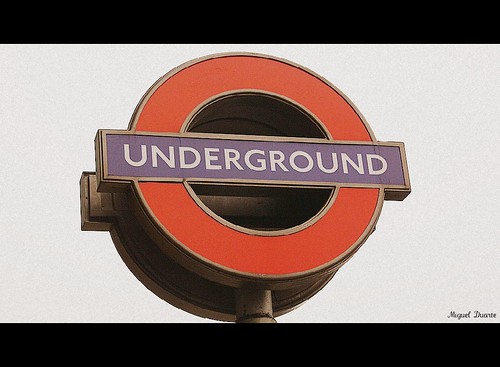
The London Underground (also known as the Tube or The Underground) is a rapid transit system serving a large part of Greater London and some parts of Buckinghamshire, Essex and Hertfordshire in England. The London Underground is the oldest underground railway in the world, with the first section being opened in 1863 on which is now the Circle, Hammersmith & City and Metropolitan lines.[3] In 1890 it became the first to operate electric trains[4][5] The whole network is commonly referred to by Londoners and in official publicity as the Tube,[6] although the term originally applied only to the deep-level bored lines, along which run slightly lower, narrower trains on standard-gauge track, to distinguish them from the sub-surface "cut and cover" lines that were built first.
The earlier lines of the present London Underground network were built by various private companies. Apart from the main line railways, they became part of an integrated transport system in 1933 when the London Passenger Transport Board (LPTB) or London Transport was created. The underground network became a single entity in 1985, when the UK Government created London Underground Limited (LUL).[7] Since 2003 LUL has been a wholly owned subsidiary of Transport for London (TfL), the statutory corporation responsible for most aspects of the transport system in Greater London, which is run by a board and a commissioner appointed by the Mayor of London.[8]
The Underground serves 270 stations and has 402 kilometres (250 mi) of track,[1] making it the second longest metro system in the world after the Shanghai Metro.[9] It also has one of the highest number of stations. In 2007, more than one billion passenger journeys were recorded,[2] making it the third busiest metro system in Europe after Moscow and Paris. The tube is an international icon for London, with the tube map, considered a design classic, having influenced many other transport maps worldwide. Although shown on the Tube map, the Docklands Light Railway (DLR) and London Overground are not part of the network.
Sem comentários:
Enviar um comentário